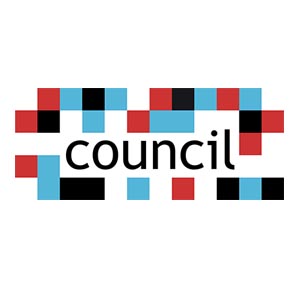
When you consider our reliance upon digital collaboration—and you think about the pace of advancements in the IoT space—finding ways to upskill, inspire creativity, and plug into the broader IoT community to get hands-on IoT training is essential.
While in-person connections like user groups and tech events may feel like a distant memory, I’m thankful that we can still connect online. Some of us who can’t get enough of IoT, are even using this time to get creative while working at home
Microsoft recently wrapped up #JulyOT – a month dedicated to learning and building IoT projects. I like to think of #JulyOT as a celebration of IoT, a way to bring together enthusiasts from around the world for some serious fun exploring IoT innovations, sharing ideas and inspiration, and most importantly, getting hands-on with some of the latest tech driving the industry forward. And while each participant gained their own unique value from the event, one of the most important #JulyOT takeaways is this:
You don’t have to be a developer to get started with IoT.
Surprised? Here’s the thing: IoT is getting simpler and easier. Which makes right now an opportune time to dip your toe into this fascinating world. Whether you’re brand new to IoT or someone with a bit more experience, I invite you to learn more about building IoT solutions by exploring some of my favorite #JulyOT projects and resources. I’ll also share ways for you to take what you learn and apply it toward professional certification.
Make It Fun
I love IoT. I love tinkering with the technology and experimenting with new and unique ways to connect things. In fact, I’ve found that one of the best ways to get started with IoT is to dive into a DIY project at home. It’s low pressure, and you can even get your family involved.
Of course, if you’re an IoT newbie, you’ll probably want some guidance. My colleague, Jim Bennett, works a lot in the academic communities, and he’s created a variety of simple projects that are built around inexpensive hardware that can be picked up by anyone.
Jim’s project for smart garden ornaments helps to keep tabs on neighborhood conditions like temperature, moisture, and noise levels. Jim steps through the entire process from setting up and connecting to cloud services to building a sensor mesh to building your first smart garden ornament. He even walks through how to create a DIY device for detecting soil moisture using two nails and a Lego brick!
As it happens, Jim’s project coincided with a maker-focused portion of the official #MicrosoftHackathon, which challenged participants to develop IoT solutions using parts and components from a “Mystery Maker Box.” Some of the projects from this initiative include:
- A vehicle camera to automatically detect vehicles reported via the Amber Alert System
- A modified Mystery Maker Box that acts as a photo booth and uploads gifs to Twitter!
Make It Relevant
In addition to being fun, another great thing about IoT is that it solves real problems. Finding ways to use IoT to solve challenges around the house can be a big motivator.
For example, if you’re like me, you’ve been spending a LOT more time than usual indoors over the last few months. And, if you’re like me, you breathe a lot, and breathing creates CO2. When C02 levels get too high, it can impact our productivity and concentration and make us tired, sad, and grouchy.
OK, sure, you could go purchase a carbon dioxide (CO2) monitor at your local hardware store. But since you’re interested in IoT, why not build your own?
This IoT-connected CO2 monitor is a fantastic project from my colleague, Dave Glover, that runs on Azure Sphere and a sensor from Seeed. In this step-by-step project, you’ll get awesome hands-on experience with secure, embedded devices running Azure Sphere.
In fact, Dave’s #JulyOT project has fed and inspired the ongoing #100DaysOfHardware initiative from Fabian Hinsenkamp which seeks to introduce concepts of circuits, microcontrollers, and IoT to enthusiasts. Join the fun by following along to see something innovative come together. You might even be inspired to create your own Day 100 Project!
Or, if you’re keen on learning more about artificial intelligence (AI) at the edge, you can create a DIY smart home security system which collects multiple video inputs, such as objects in the driveway or people in a pool, and uses an NVIDIA Jetson Nanodevice to combine those inputs into an intelligent video analytics pipeline. In addition to online modules, this DIY project also features eight hours of live stream video content showing how to complete the project from start to finish.
For another cool project using the NVIDIA Jetson Nano and AI at the edge, check out this #JulyOT-inspired autonomous vehicle equipped with an onboard drone. Produced by Stockholm-based Stratiteq, this solution is designed to explore otherworldly environments and was recently tested off the coast of Iceland.
Make It Official
The experience you gain from projects like these is incredibly relevant to IoT solutions being built for businesses around the world. So, if you’ve tried out a project and you’ve become smitten with IoT—or you’re in a space where you’ve already got some experience and you’re ready to take it to the next level—I’d like to encourage you to “make it official” by achieving Azure IoT Developer certification (AZ-220).
Preparing to take the certification exam costs nothing, and there are plenty of resources. In addition to completing an IoT project, I’d like to share three key steps to getting certified.
Step 1: Take advantage of Microsoft Learn. For the AZ-220 certification, there are four learning paths, complete with knowledge checks, that were designed to help you prepare for certification:
- Introduction to Azure IoT
- Securely connect IoT devices to the cloud
- Build the intelligent edge with Azure IoT Edge
- Develop IoT solutions with Azure IoT Central.
Step 2: Focus in on specific areas where you need to reinforce your learning by downloading this self-assessment tool.
Step 3: Connect with others who are on the same journey. My colleague, Diana Phillips, set up study groups comprised of deep tech sessions, online reviews, and even assigned homework that includes reading and hands-on activities. These are augmented by GitHub labs that enable you to pull down real environments, providing opportunities to take what you’re reading and apply it to real-world scenarios.
You Can Do This!
IoT is a fascinating and ever-evolving technology, rich with opportunity. Whether you’re starting out as a student / maker or have a developer background in AI or hardware, take the time to feed your IoT curiosity and upskill. Have fun with it and make it relevant by leveraging #JulyOT projects and resources. And if you still love IoT (and I hope you will!), I encourage you to learn more about Azure IoT and then pursue AZ-220 IoT Developer Certification. Finally, I look forward to seeing your project, so don’t forget to follow #JulyOT and share and tag your project on LinkedIn and Twitter!










 Latest IoT News
Latest IoT News







